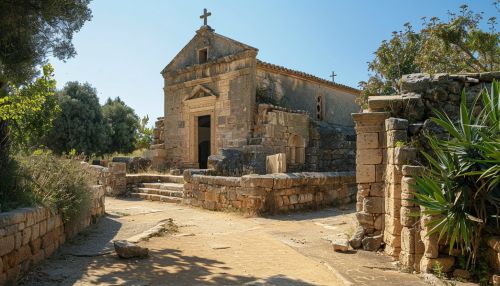Early Christianity
Origins and Historical Context
Early Christianity, also known as the Early Church, refers to the period in the history of Christianity preceding the First Council of Nicaea in 325. It is typically divided into the Apostolic Age and the Ante-Nicene Period (from the Apostolic Age until Nicea).


The Apostolic Age is named after the Apostles and their missionary activities. It holds special significance in Christian tradition as the time of the Twelve Apostles and Paul the Apostle. The primary sources of information about the Apostolic Age are the Acts of the Apostles and the Pauline Epistles.
The Ante-Nicene Period was the period following the Apostolic Age. It was characterized by a variety of interpretations of the teachings of Jesus, with a struggle for orthodoxy, and the development of proto-orthodox Christian theology.
Teachings and Beliefs
The teachings and beliefs of Early Christianity were diverse. The first followers of Jesus composed an apocalyptic, Second Temple Jewish sect, which historians refer to as Jewish Christianity. Early Christianity gradually grew apart from Judaism during the first two centuries of the Christian Era; it established itself as a predominantly gentile religion in the Roman Empire.
Spread of Christianity
Christianity spread throughout the early Roman Empire, despite persecutions due to conflicts with the pagan state religion. Emperor Constantine legalized the practice of Christianity in 313, and it became the state religion in 380.
Persecutions
From the beginning of the Christian movement, Christians have been subject to persecutions. This involved punishments, including death, for Christians such as Stephen and James, son of Zebedee, who were killed for their faith. The persecutions culminated in the great persecution under Diocletian at the end of the 3rd century.
Development of the Biblical Canon
The development of the New Testament canon was, like that of the Old Testament, a gradual process. Irenaeus (died c. 202) quotes and cites 21 books that would end up as part of the New Testament, but does not use Philemon, Hebrews, James, 2 Peter, 3 John and Jude. By the early 3rd century Origen of Alexandria may have been using the same 27 books as in the modern New Testament, though there were still disputes over the canonicity of Hebrews, James, II Peter, II and III John, and Revelation.
